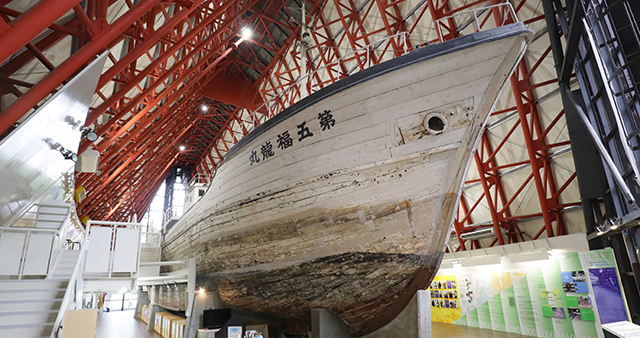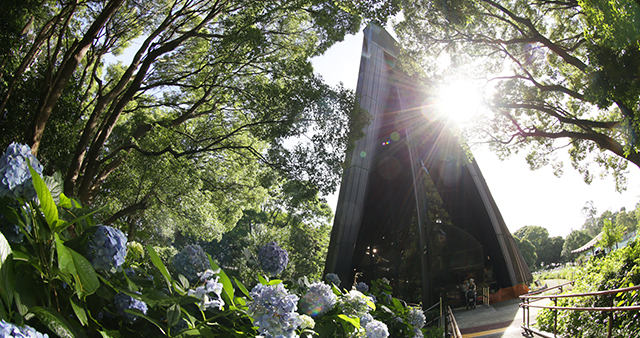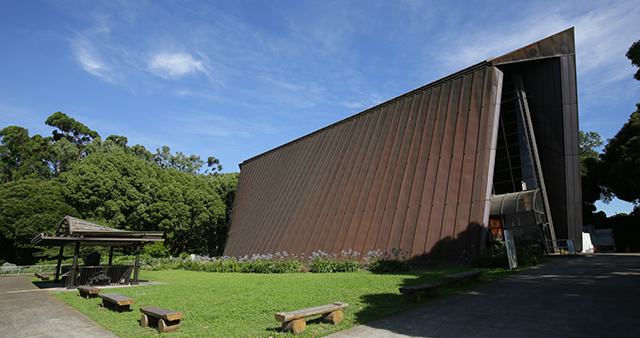Daigo Fukuryu-Maru Exhibition Hall
Admission free
CLOSED: Every Monday (or the next weekday when Monday is a public holiday)
Warning: Undefined variable $list in /home/ssu4592/public_html/wp/wp-content/themes/fukuryumaru_theme/page-en.php on line 32
Exhibition Overview
In this exhibition hall, the “Daigo Fukuryu Maru” (Lucky Dragon #5) wooden tuna fishing boat is displayed, together with related items and materials.
The “Daigo Fukuryu Maru” was damaged by the hydrogen bomb test conducted by the United States on March 1, 1954 at Bikini Atoll, Marshall Islands in the Pacific.
Although only coastal fishing is carried out by wooden boats these days, at the time such wooden boats were also used in deep-sea fishing. The “Daigo Fukuryu Maru” was built in 1947 in Wakayama Prefecture as a bonito fishing boat, but was later remodeled as a deep-sea tuna fishing vessel.
After exposure to the H-bomb test, the boat was reconstructed as a practice vessel for the Tokyo University of Fisheries and was finally retired from service in 1967.
The Tokyo Metropolitan Government constructed this exhibition hall in order to spread knowledge not only about wooden vessels used in deep-sea fishing, but also to raise awareness so that the tragedy caused by atomic and hydrogen bombs will not be repeated. (Tokyo Metropolitan Government, opened June 10, 1976)
Group visits
More than 400 schools visit our exhibition hall every year. Volunteers are available to guide student or citizen groups through the exhibition (approximately 15-20 minutes). Please feel free to contact us with any enquiries.
No English guide available. Please arrange an interpreter by yourself.
Exhibitions
Exhibits within the hall include the actual Daigo Fukuryu Maru ship itself, as well as explanation panels about the damage caused by H-bomb testing, the health impact on the ship's crew, the societal impact of "atomic tuna", radioactive rain, the momevemtn against A and H-bombs, the situation of contamination throughout the Pacific, settlements regarding the incident by the Japanese and US Governments, the nuclear damage in the Marshall Islands, the damage caused by nuclear testing around the world, and a chronology of nuclear testing and development. Located outside the museum are the Memorial for Aikichi Kuboyama, the Daigo Fukuryu Maru's engine, and the Tuna Memorial.








